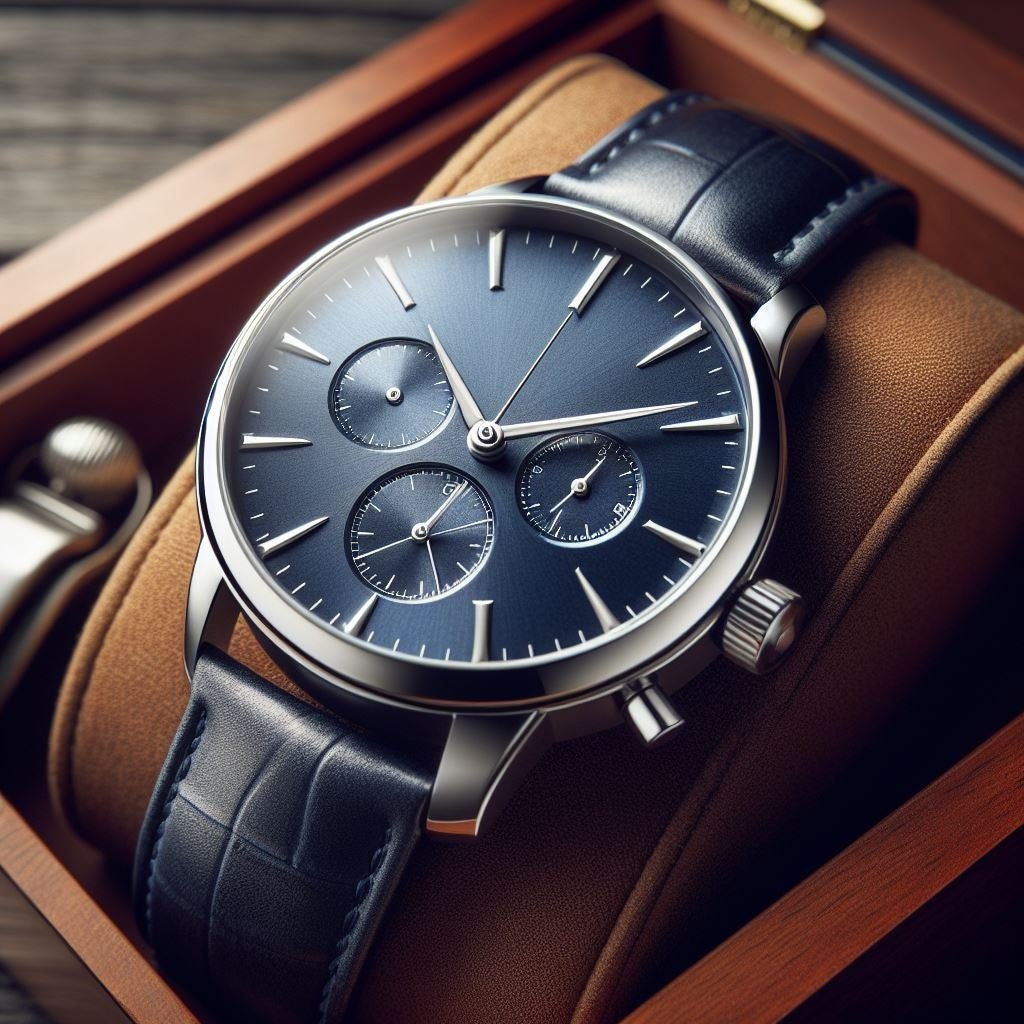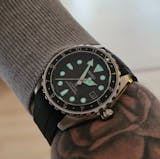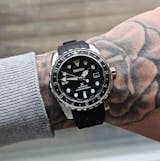Article: Watch Dial Guide
Watch Dial Guide
Everything You Need to Know About Watch Dials
A watch dial is the face of the timepiece, combining functionality and aesthetics to create a harmonious and practical design. It plays a critical role in a watch's usability and appeal, making it one of the most important components of any timepiece. In this blog, we explore the key aspects of watch dials, from materials and specifications to complications and the importance of o’clock positions.
1. Important Aspects of a Watch Dial
Design and Aesthetics
-
Layout: The arrangement of numerals, indices, sub-dials, and branding should be harmonious and visually appealing.
-
Style: Minimalist, sporty, classic, or intricate designs cater to different tastes and purposes.
-
Color: Dial colors, from classic white or black to bold hues, and finishes like matte, sunburst, or enamel add character.
-
Branding: Logos and text (e.g., "Automatic") are often prominently displayed.
Legibility
-
Contrast: High contrast between the dial, hands, and markers improves readability.
-
Indices and Numerals: Options include Arabic, Roman numerals, or baton markers. Their size and style enhance readability and complement the design.
-
Hands: Properly sized hands ensure clear time reading, often enhanced with luminescent material.
Material and Finish
-
Base Materials: Commonly brass, aluminum, or precious metals like gold.
-
Protective Coating: Anti-glare coatings and scratch-resistant materials increase durability.
2. Specifications of a Watch Dial
Material
-
Common Materials:
-
Brass: Versatile and easy to customize.
-
Enamel: Luxurious but fragile.
-
Mother of Pearl: Elegant and iridescent, often used in luxury watches.
-
Ceramic or Metal Alloys: Durable with a high-quality finish.
-
-
Protective Coating: Clear lacquer or anti-UV coating prevents fading and damage.
Size and Proportions
-
Diameter: Proportional to the case size for balance and readability.
-
Thickness: Influences the watch’s overall profile and fit.
Markers and Indices
-
Type: Printed, applied, or painted.
-
Style: Arabic numerals, Roman numerals, batons, dots, or mixed markers.
-
Finish: Polished, brushed, or lume-filled markers enhance visibility in low light.
Hands
-
Material: Steel, brass, or gold.
-
Style: Dauphine, sword, baton, leaf, or skeletonized.
-
Luminescence: Commonly uses Super-LumiNova or tritium for readability in the dark.
Surface Finish
-
Matte: Reduces glare for sporty or field watches.
-
Glossy/Polished: Adds elegance to dress watches.
-
Textured: Patterns like guilloché, sunburst, or engraved designs enhance sophistication.
3. Do Dials Always Have Lume?
No, not all watch dials have luminescent material. Whether lume is included depends on the watch’s design and purpose:
Watches with Lume
-
Diver’s Watches: Essential for underwater readability.
-
Field and Military Watches: Useful for visibility in darkness.
-
Aviation Watches: Ensures pilots can read the time during night flights.
Watches without Lume
-
Dress Watches: Focus on elegance over low-light functionality.
-
Luxury Watches: Materials like enamel or mother of pearl often exclude lume.
-
Vintage-Inspired Watches: May replicate historical designs without luminescence.
Partial Lume
Some watches only have lume on hands or a few markers, balancing functionality with aesthetics.
4. Moon Phase vs. Calendar
Moon phase and calendar complications are distinct features that serve different purposes:
Moon Phase
-
What It Displays: The current phase of the moon.
-
Purpose: Tracks the 29.53-day lunar cycle.
-
Design: Often depicted as an artistic element on the dial.
-
Audience: Appeals to those who appreciate traditional craftsmanship.
Calendar
-
What It Displays: Date, day, month, or year.
-
Types:
-
Simple Date: Displays only the date.
-
Day-Date: Shows the day and date.
-
Triple Calendar: Includes date, day, and month.
-
Perpetual Calendar: Automatically accounts for leap years.
-
-
Purpose: Practical for daily use.
5. Distinction Between Date and Day Windows
Date Window
-
Displays: Numerical day of the month (e.g., 1-31).
-
Placement: Typically at 3 or 6 o’clock.
-
Use Case: Tracks the calendar date.
Day Window
-
Displays: The day of the week (e.g., Monday).
-
Placement: Commonly at 9 or 12 o’clock.
-
Use Case: Identifies the weekday.
Day-Date Complication
Combines both features, often displayed together (e.g., "MON 15").
6. Importance of O’Clock Positions on Dials
The placement of complications, markers, and branding around the o’clock positions ensures the watch’s readability, functionality, and visual harmony.
Key Positions
-
12 O’Clock: Often reserved for the brand logo or major complications.
-
3 O’Clock: Common for date windows or crown placement.
-
6 O’Clock: Frequently houses small seconds or moon phase indicators.
-
9 O’Clock: Often used for day windows or secondary time zones.
Functionality
-
Dive and tactical watches emphasize 12, 3, 6, and 9 o’clock markers for easy orientation.
-
Chronographs use these positions for sub-dials to enhance usability.
Aesthetics
Symmetry or intentional asymmetry around these positions creates a balanced and appealing design.
7. Are O’Clock Positions Only Important for Day or Date Windows?
No, o’clock positions influence much more than just day or date windows. They are vital for:
Complications
-
Chronographs: Sub-dials are often placed at 3, 6, and 9 o’clock for balance.
-
Moon Phase: Typically positioned at 6 or 12 o’clock for prominence.
-
Power Reserve Indicators: Often located at 12, 2, or 6 o’clock.
Markers and Hands
-
Bold markers at 12, 3, 6, and 9 enhance readability.
-
Proper alignment ensures a clean and professional look.
Branding and Decorative Features
Logos and additional text are usually aligned with key o’clock positions to avoid overcrowding the dial.
Conclusion
Watch dials are meticulously designed to balance functionality and aesthetics. From the materials and complications to the strategic use of o’clock positions, every element plays a role in defining the watch’s character. Whether you’re drawn to practical features like day-date windows or artistic touches like a moon phase, the dial’s layout reflects the craftsmanship and purpose behind each timepiece. Understanding these details enhances your appreciation of the art of watchmaking.




Leave a comment
This site is protected by hCaptcha and the hCaptcha Privacy Policy and Terms of Service apply.